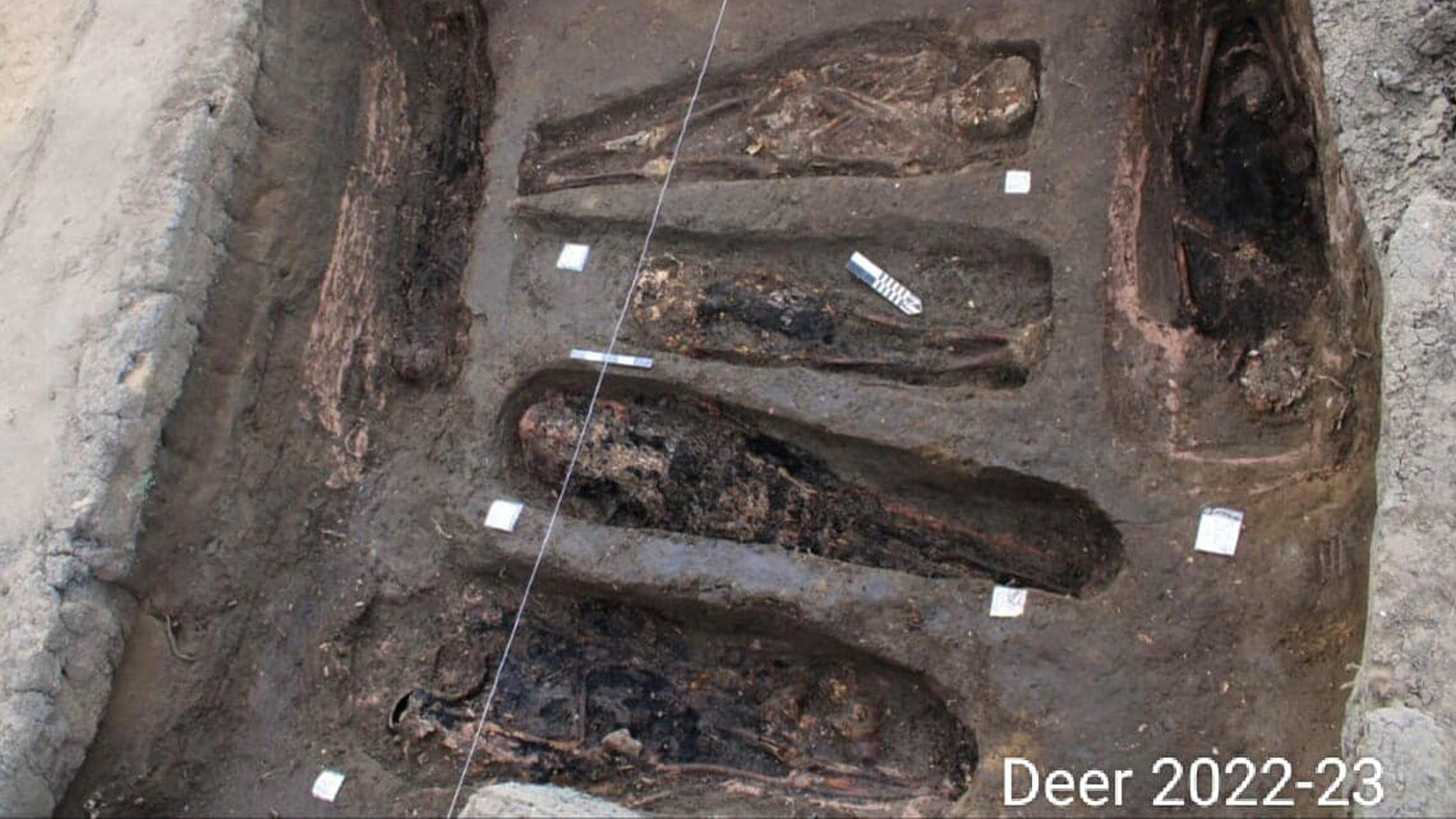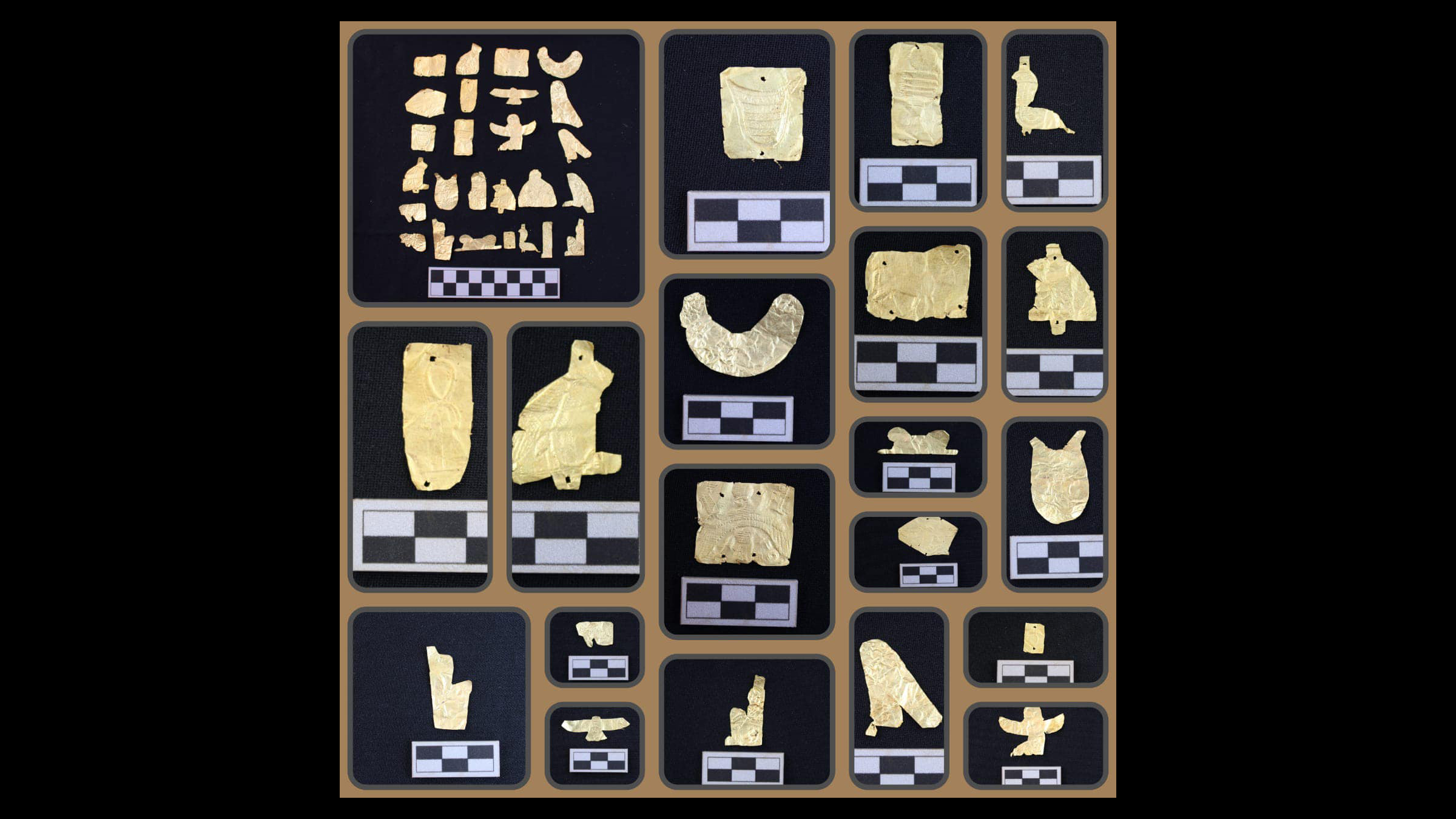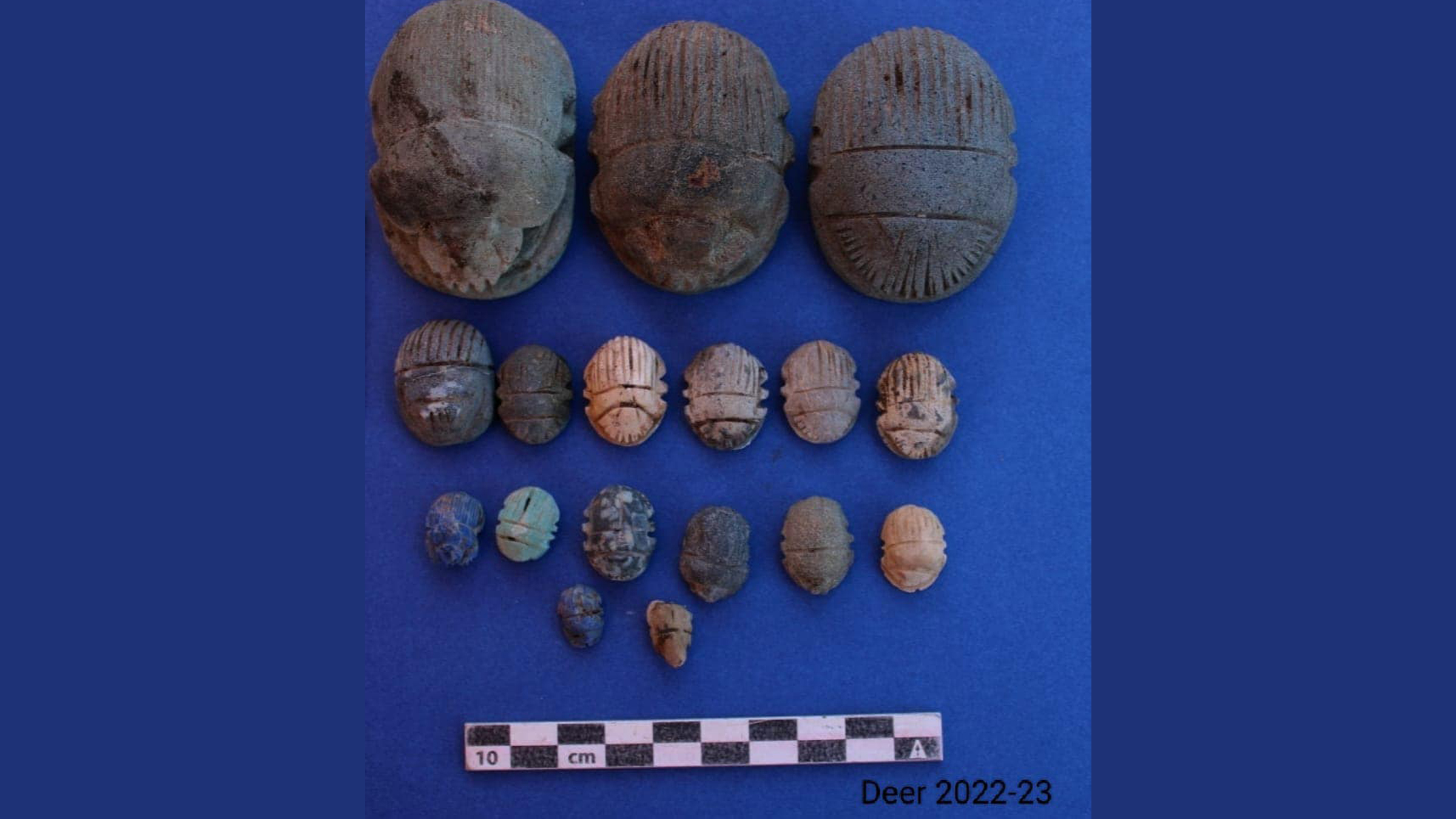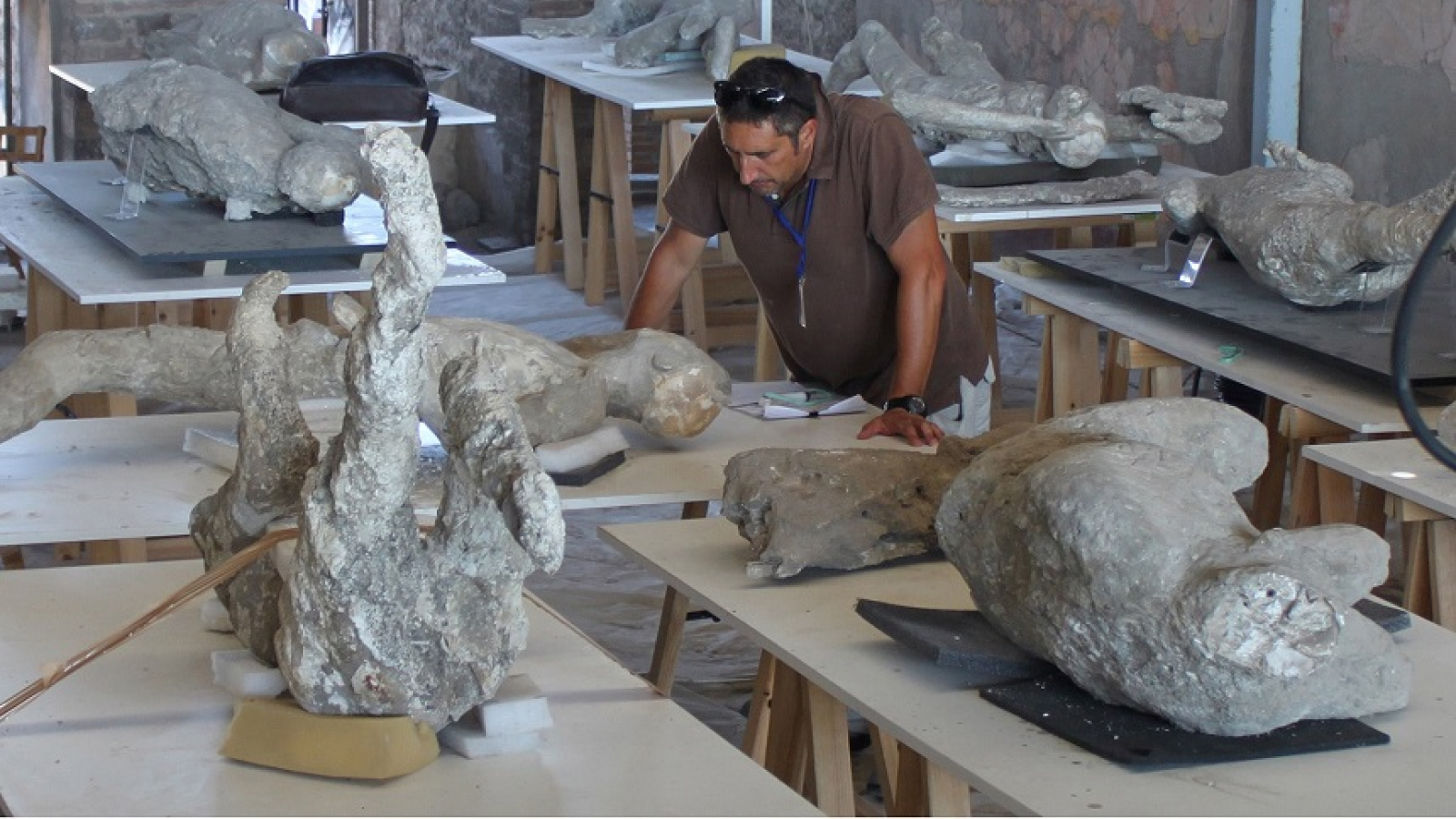Protective gold idols and 'rejuvenating' amulets found in ancient Egyptian burials
Archaeologists in Egypt have discovered about 20 ancient burials, some of which contain gold idols fashioned to look like the deities Isis, Bastet and Horus.

Archaeologists have discovered about 20 ancient burials in the city of New Damietta, Egypt, about 95 miles (153 kilometers) northeast of Cairo, according to the Egyptian Ministry of Tourism and Antiquities.
The burials date back to the 26th dynasty (circa 688 B.C. to 525 B.C.), a time when Egypt was independent of foreign rulers and its capital was located at Sais, a city in the Nile Delta. However, Egypt struggled at times to maintain its independence during this dynasty, and in 525 B.C., the Persians took over the region.
At least some of the burials contained gold foil grave goods that had been fashioned into the shape of Egyptian deities, including Isis, a goddess associated with healing and magic; Bastet, a cat goddess who was thought to protect people; and the falcon-headed god Horus.
Related: Egyptian ring featuring 'god of fun' discovered in ancient burial
"It is quite clear in contemporary religious texts that the Egyptian gods were thought [to] have flesh of gold," said Campbell Price, curator of Egypt and Sudan at the Manchester Museum at the University of Manchester and an Egyptologist at the University of Liverpool , who was not involved in the excavation.


Placing these gold objects on the body of the deceased may have "effected the divinity of the deceased — providing protection from the gods depicted but also integrating the deceased among the gods," Price told Live Science in an email.
The site also held the remains of canopic jars, which were used to preserve some of the deceased's organs, according to a Dec. 20 statement that the Egyptian Ministry of Tourism and Antiquities posted on Facebook. Archaeologists also found scarab amulets in the shape of dung beetles. These amulets were popular in ancient Egypt and were thought to have rejuvenating abilities.
Get the world’s most fascinating discoveries delivered straight to your inbox.
Much remains unknown about these ancient Egyptian individuals, including the identities of those buried, what their health was like or even whether they were buried in coffins. Live Science reached out to some of the excavation team's leaders but did not hear back by the time of publication.

Owen Jarus is a regular contributor to Live Science who writes about archaeology and humans' past. He has also written for The Independent (UK), The Canadian Press (CP) and The Associated Press (AP), among others. Owen has a bachelor of arts degree from the University of Toronto and a journalism degree from Ryerson University.


